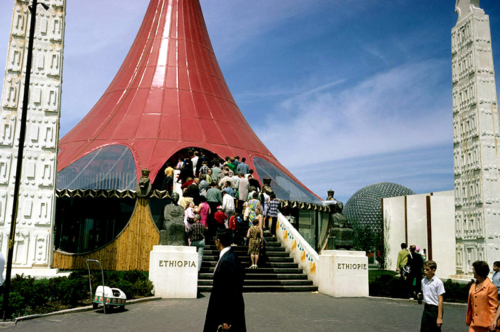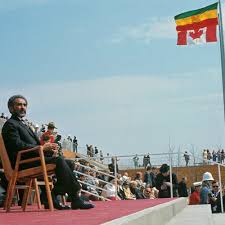Title : Tracing Haile Selassie I’s Relationship with Canada
By UnionJah Observer | April 25, 2025

Canada and the Crown: Tracing Haile Selassie I’s Relationship with Canada
Introduction
Emperor Haile Selassie I of Ethiopia stands as one of the most iconic monarchs of the 20th century, revered not only for his leadership but also for his efforts toward African unity, global peace, and the assertion of sovereign dignity in an age of colonialism. While much has been documented about his relationships with African, European, and American powers, his connection with Canada, though subtle, offers unique insights into Canada’s evolving identity in the post-colonial era and its engagement with African liberation and the broader Commonwealth.
The Commonwealth Connection
Haile Selassie’s ties with Canada are best understood within the context of the British Commonwealth, of which both Ethiopia and Canada were engaged participants during the mid-20th century. Although Ethiopia was not a colony, it was deeply affected by imperial struggles, particularly during the Italian invasion of 1935. Canada, as a member of the British Empire and later the Commonwealth of Nations, held a diplomatic position that was observant, if not always proactive.
When Haile Selassie addressed the League of Nations in Geneva in 1936, it struck a chord with many Canadians. Newspapers across Canada covered his speech — a plea against fascist aggression — with a mixture of admiration and caution. While Canada did not intervene directly, there was widespread public sympathy for Ethiopia’s struggle, especially among Black Canadian communities who viewed Selassie as a symbol of African resistance and divine kingship.
A Symbol Among African-Canadians
For Black Canadians, particularly those of Caribbean and African descent, Haile Selassie became a living emblem of dignity and resistance. His lineage — believed to be descended from the Biblical union of King Solomon and the Queen of Sheba — carried great spiritual weight. Among the growing Rastafarian movement in Canada, Selassie was revered as the “King of Kings” and “Lord of Lords,” with his imperial stature embodying the pride and potential of a free African identity.
This reverence was not abstract. In cities such as Toronto, Montreal, and Ottawa, cultural events, music, and community gatherings often invoked Haile Selassie’s teachings and speeches. Rastafari houses and Pan-African groups began to form, often circulating his speeches, images, and writings in resistance to cultural erasure and systemic racism.
Diplomatic Engagements and Visits

Haile Selassie I’s Visit to Montreal and Expo 67
His Imperial Majesty Emperor Haile Selassie I of Ethiopia visited Canada in 1967, making a significant stop at Expo 67 in Montreal during his official state visit.
Key Highlights of His Visit:
- Date: July 1967
- Purpose: Strengthening diplomatic ties between Ethiopia and Canada, promoting peace, international cooperation, and Ethiopia’s cultural and political role on the world stage.
- Expo Visit: Haile Selassie toured various pavilions, including the Ethiopian Pavilion, which was part of the Africa Place exhibit. The pavilion featured Ethiopia’s rich imperial history, cultural heritage, and modern development initiatives under his leadership.
- Diplomatic Engagements: He met with Governor General Roland Michener and other Canadian officials, discussing matters of mutual interest and international peace.
Haile Selassie was admired for his dignity, global vision, and pan-African leadership, and his presence at Expo 67 emphasized Ethiopia’s independence, legacy of African sovereignty, and the need for unity among nations.
- His presence at Expo 67 left a powerful impression on diaspora communities, including Black Canadians, Caribbean nationals, and Rastafarians, who saw the Emperor’s visit as deeply symbolic.
- It solidified his image as a global statesman and living representation of African pride and resistance to colonialism.
- The visit is often remembered in Rastafarian communities across Canada as a spiritual and cultural milestone.
As a member of the United Nations founding assembly, Ethiopia’s collaboration with Canada on peacekeeping missions and international development deepened over time.
In the 1960s and 70s, Canada supported various development initiatives in Ethiopia through the Canadian International Development Agency (CIDA). This period saw growing interest from Canadian universities and churches in Ethiopian culture, religion, and the Ethiopian Orthodox Church — all closely associated with Haile Selassie’s vision of a sovereign and spiritually-rooted Ethiopia.
Legacy and Future Recognition
Today, Haile Selassie’s historical and spiritual presence in Canada remains understudied yet profound. While not widely recognized in official diplomatic history, his influence endures in grassroots culture, Black Canadian history, and in the symbolism of African pride and unity.
Efforts are now underway to honor his legacy more formally in Canada.
Conclusion
Haile Selassie I’s relationship with Canada, though subtle in the annals of diplomacy, is profound in spirit and culture. It is traced through state visits or treaties and in the hearts of communities, in the songs of reggae artists, in the prayers of Rastafari livity, and in the growing recognition of Ethiopia’s place in the global mosaic. As Canada continues to embrace its multicultural legacy, honoring leaders like Haile Selassie I can bridge continents, heal historical wounds, and inspire a new generation of unity, justice, and divine purpose.

